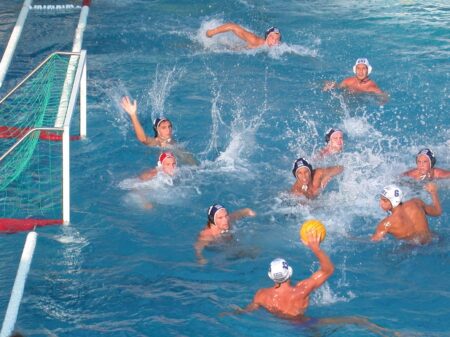Military special operations candidates face some of the most demanding physical challenges in the armed forces, with swimming standing out as a critical component of their training regimen. Recognizing the importance of water proficiency and endurance, Military.com has spotlighted an essential swim workout designed specifically to prepare candidates for the rigorous aquatic demands of special operations selection. This focused training not only enhances stamina and technique but also builds the mental toughness required to succeed in high-stress, mission-critical environments.
Training Techniques That Build Endurance and Strength in Water
To maximize performance in aquatic environments, candidates must incorporate high-intensity interval training (HIIT) that targets both aerobic capacity and muscular endurance. Exercises such as sprint intervals, alternating between 25 and 100 meters at peak effort, force the body to adapt rapidly to varied stroke tempos and breathing patterns. Additionally, using resisted swims with drag suits or tethered systems enhances muscle recruitment, particularly engaging the shoulders, core, and legs to build functional strength that translates to operational readiness.
Complementing swim intervals, underwater drills focusing on breath control substantially improve carbon dioxide tolerance and lung capacity-critical factors for prolonged submersion during missions. Cross-training in the water, like dynamic treading with weights or medicine ball throws, further builds explosive power while maintaining cardiovascular endurance. The following table outlines a sample weekly regimen balancing intensity and recovery to optimize gains efficiently:
| Day | Workout Focus | Key Drill | Duration |
|---|---|---|---|
| Monday | Endurance | Steady 1500m swim | 45 min |
| Wednesday | Strength | Tethered resisted swim | 30 min |
| Friday | Power & Breath Control | Underwater sprint repeats | 40 min |
| Saturday | Cross-training | Treading with dumbbells | 35 min |
Structured Intervals and Drills to Boost Speed and Efficiency
Implementing interval training with deliberate pacing and recovery phases is crucial for cultivating both speed and endurance in military swim candidates. For example, alternating between 100-yard sprints and 50-yard recovery swims enhances cardiovascular efficiency while maintaining stroke technique under fatigue. Incorporating drills like fingertip drag, catch-up, and bilateral breathing within these intervals sharpens stroke mechanics, promoting smoother, faster movement through the water.
To optimize workouts, candidates should focus on quality over quantity by tracking specific metrics such as pace per 100 yards and rest intervals. A sample structured interval set might look like this:
| Set | Distance | Intensity | Rest |
|---|---|---|---|
| 1 | 4 x 100 yards | Fast | 30 sec |
| 2 | 6 x 50 yards | Moderate | 20 sec |
| 3 | 8 x 25 yards | All-out sprints | 15 sec |
Regularly rotating drills and interval schedules helps avoid plateaus, ensuring continuous improvement in stroke efficiency and metabolic conditioning-key components for the demanding requirements faced in special operations swimming tests.
Expert Tips on Recovery and Injury Prevention for Candidates
For candidates tackling the grueling swim workouts essential to military special operations, prioritizing recovery is just as vital as the training itself. Incorporate active recovery techniques such as low-impact swimming or gentle stretching within 24 hours post-workout to enhance blood flow and aid muscle repair. Remember, hydration and nutrient-dense meals rich in protein and omega-3 fatty acids can accelerate healing and reduce inflammation. Equally important is ensuring adequate sleep-aiming for 7-9 hours nightly-to support cognitive function and physical resilience during intensive training cycles.
Preventing injury starts with smart preparation and attentive self-care. Regularly performing dynamic warm-ups focused on shoulders, hips, and core stabilizers can dramatically reduce the risk of strain. Utilize foam rolling and myofascial release to alleviate muscle tightness before and after sessions. Candidates should also heed the warning signs of overtraining, such as persistent fatigue or joint pain, and adjust workloads accordingly. Below is a quick-reference checklist emphasizing key preventative measures:
- Dynamic warm-ups targeting swim-specific muscles
- Consistent hydration throughout training
- Balanced nutrition with anti-inflammatory foods
- Scheduled rest days integrated weekly
- Monitoring pain signals and seeking early intervention
| Recovery Technique | Recommended Duration | Benefit |
|---|---|---|
| Active Recovery Swim | 15-20 min | Improves circulation |
| Foam Rolling | 10 min | Reduces muscle tightness |
| Stretching | 10-15 min | Enhances flexibility |
| Sleep | 7-9 hrs/night | Supports recovery & focus |
The Conclusion
In conclusion, mastering the essential swim workout outlined for military special operations candidates is a critical step toward meeting the rigorous demands of elite service. This comprehensive regimen not only builds the necessary physical endurance and strength but also prepares candidates mentally for the challenges they will face in the field. As the journey to becoming a special operator continues to evolve, incorporating targeted swim training remains a vital component of readiness and resilience. For those pursuing this elite path, adhering to these swim workout standards is more than preparation-it’s a foundation for success.





